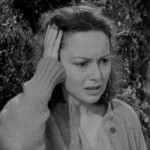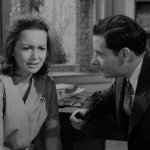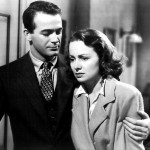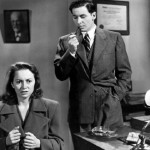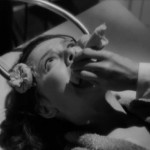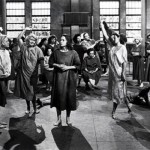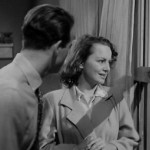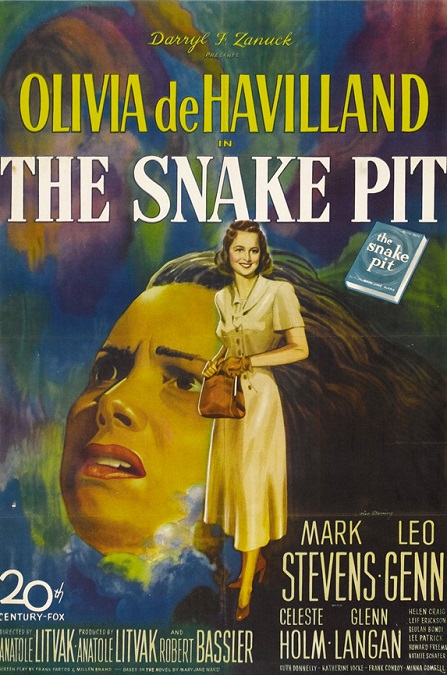
The Snake Pit – 1948
I have to start this review off by saying, right up front, how incredibly impressed I was by Olivia de Havilland’s outstanding performance. The movie is about a woman’s struggle to find her sanity while being treated at a mental hospital.
Right from the opening scene, it is clearly evident that her character, Virginia, is bonkers. She doesn’t know who or where she is. She hears voices in her head. She doesn’t recognize the people she is with. She is perpetually confused and disoriented, and de Havilland really showed off her skills as an actress to perfection. She was magnificent.
However, the Academy decided to give the Best Actress Oscar for 1948 to Jane Wyman in Johnny Belinda, which I have not yet seen. But I’ll be honest – Wyman had better turn in a phenomenal performance, or I’ll know that de Havilland got robbed. The character of Virginia was incredibly complex. Not only does she have all the problems I have already mentioned, but she had no short-term memory, and a sketchy long-term memory. She’d had problems in her past that were rooted in her childhood, and traumas in her adult life that would test anyone’s sanity.
At the start of the film, she is already in the mental hospital, though she thinks she is a novelist, doing research in a prison for her next book. She is frightened and confused when she and the other patients are rounded up from the yard and herded into the hospital which is depicted as little more than a bedlam-esque mad-house.
Screeching and moaning women are kept in overcrowded wards, attended by a staff that is far too small. The hospital administration cannot afford to hold all the patients, and are doing their best to release as many of them as they can, whether they are well or not. Some women seem saner than others, like Virginia’s friend, Grace, played by Celeste Holm, whom she does not remember.
There is a doctor who cares about his patients on a fundamental level and truly wants them to heal and grow strong enough to survive in the real world. His name is Dr. Mark Kik, played by Leo Genn. Genn’s performance was appropriately calm and gentle, making him a likable character. As a last resort, and in an effort to make contact with Virginia and bring her back to reality, he prescribes shock therapy.
This is the third Best Picture nominated film I’ve seen that made use of shock therapy on a patient in a mental hospital, and it is never comfortable to watch. The other two were both Best Picture winners: One Flew Over the Cuckoo’s Nest in 1975 and A Beautiful Mind in 2001. It is always shown as a horribly painful experience that left the victim in a near catatonic state. This film was no different, however, there was a slight difference. Here, the treatment actually seemed to do the patient some good.
Virginia eventually begins to remember where she is and why she is there. She goes through a long period of coming to terms with being crazy, all the while being helped by her husband Robert, played by Mark Stevens. From there, the movie follows her struggles, her ups and downs, as she strives to discover and deal with the traumatic events in her past which caused her to lose touch with reality.
The film’s title seems self-evident, but there is actually a deeper and more specific meaning. After the character of Virginia acts out and is punished with a straight jacket and solitary confinement, she is sent to the worst ward of the hospital, Ward 12, despite the progress made with Dr. Kik. The women in Ward 12 are the violent and mentally deranged. Virginia called it the snake pit because she remembered a story which said that in the past, mental patients were thrown into snake pits to shock them back into reality.
And that is exactly what happened to her. Realizing that she had reached rock-bottom, she understood that she wasn’t nearly as crazy as the women of Ward 12. And even though she was still confused about some of the psychological causes of her mental illness, she was able put herself on the road to recovery.
So the film had a happy ending, which was like a final form of relief for me. I had spent the entire film in a state of nervous tension. De Havilland had a face that looked innocent and vulnerable. She invited viewers to empathize with her and feel sympathetic to her plight. She effectively portrayed the entire gambit of emotions that the character of Virginia required, and she did it all with a sense of purpose and an intense dedication to the role.
As a result, the film wasn’t always easy to watch, but it was well worth the Best Picture nomination. In fact, I think it should have won over Sir Lawrence Olivier’s Hamlet. But that’s just my opinion.
